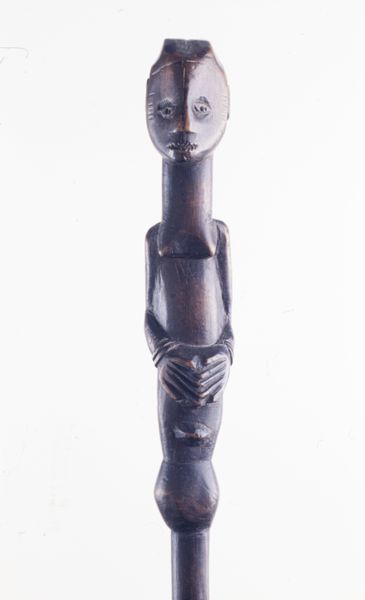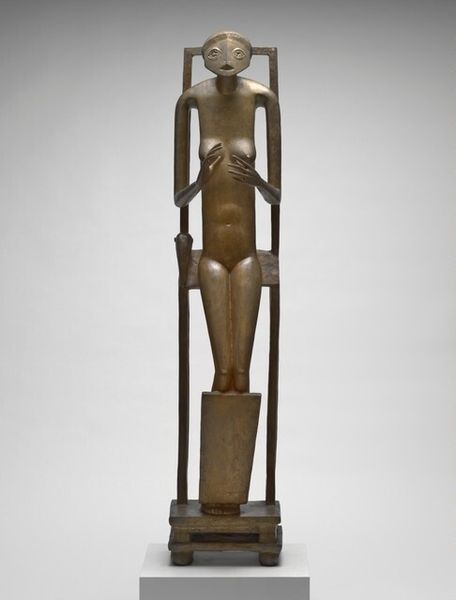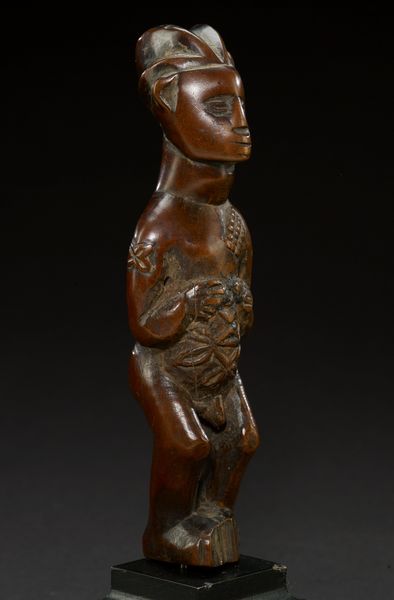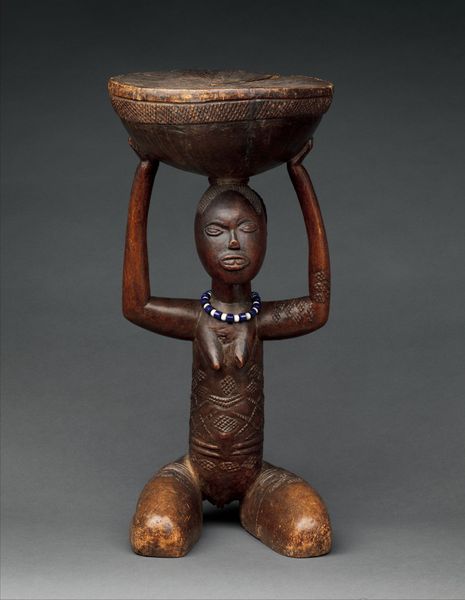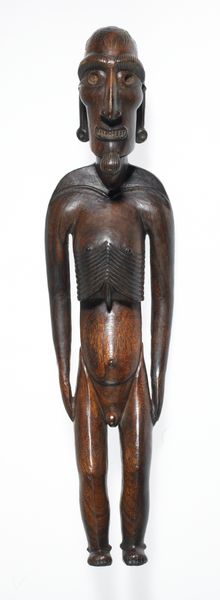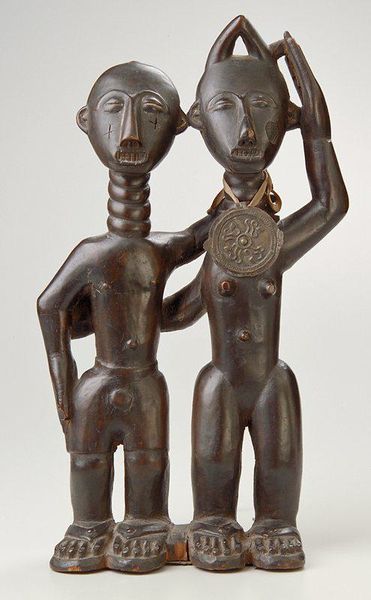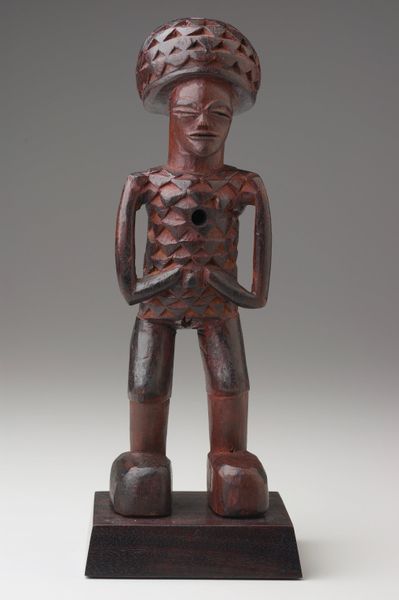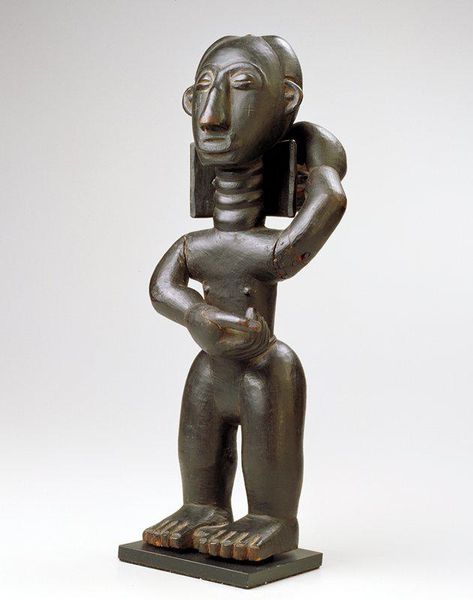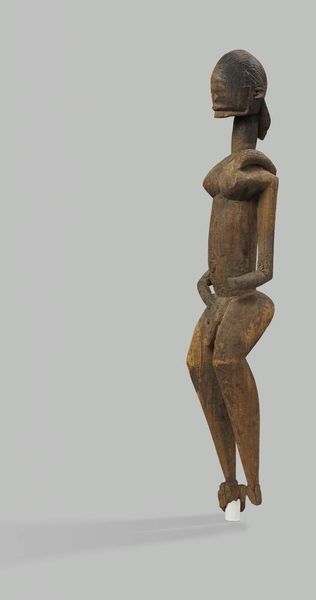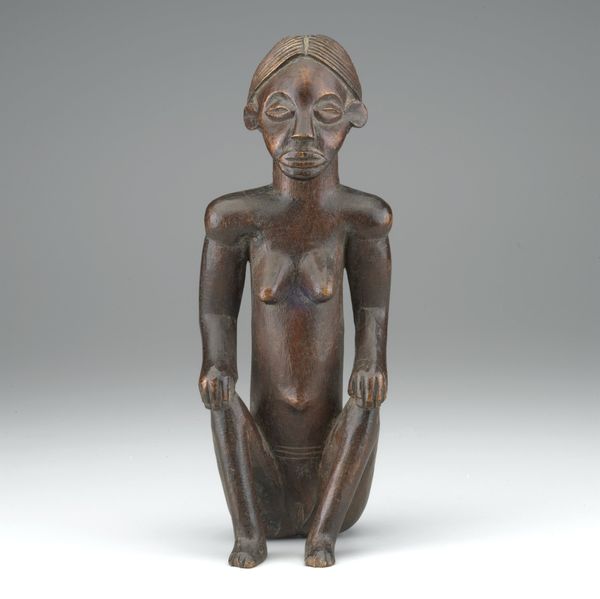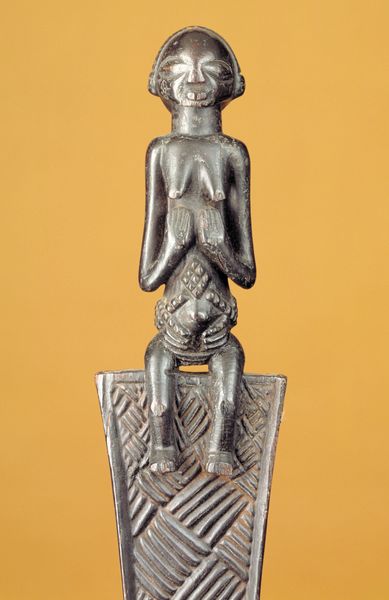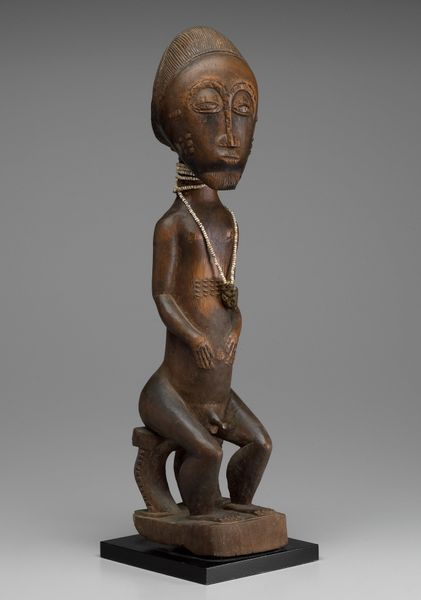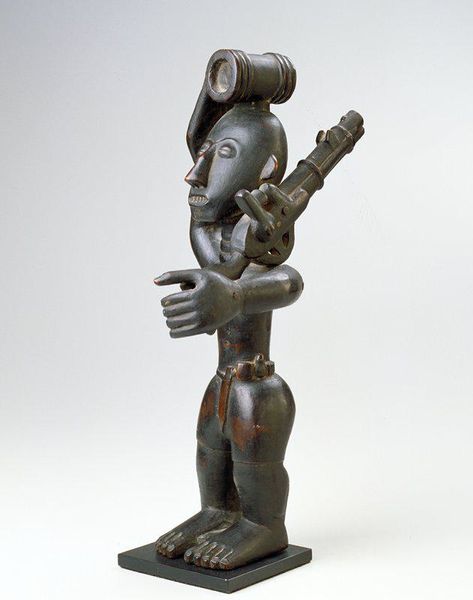
sculpture, wood
#
sculpture
#
figuration
#
form
#
sculpture
#
wood
Dimensions: 26 1/4 × 11 5/8 × 12 1/4 in. (66.68 × 29.53 × 31.12 cm)
Copyright: No Known Copyright
Editor: Here we have the "Caryatid Stool" from around 1910. It's a wooden sculpture, and it feels so powerful, like the figure is not just holding up the seat but bearing the weight of something much larger. How do we interpret the role of an artwork that serves both a functional and symbolic purpose? Curator: That's a great question. Historically, stools like this weren’t just furniture; they were often emblems of status and power within specific cultural contexts in Africa. They weren't for just anyone to sit on; they signified leadership. How does understanding its social function change how you view the figure itself? Editor: It makes her seem even more significant. Like she embodies the authority associated with the stool. Is that why she’s depicted with such strength, almost stoicism? Curator: Precisely. The depiction is not merely aesthetic. The visual language – the scale, the posture, even the material – would have communicated specific meanings to its intended audience. Carved wooden sculptures like this played a role in reinforcing social hierarchies, which museums now need to be critically aware of and acknowledge when showcasing them. Do you think exhibiting functional objects as 'art' changes their meaning? Editor: Definitely. Placing it in a museum removes it from its original function, shifting the focus to its artistic merit and its ability to communicate ideas beyond its initial purpose. Curator: And in doing so, it inevitably alters our relationship with the object itself. We look for artistic expression, but should also consider its place in a larger socio-political landscape. It prompts us to think about the public role of art and its capacity to convey complex histories and power dynamics. Editor: I hadn't thought about the socio-political aspect so deeply, but it completely reframes how I see the Caryatid Stool. It's not just an object, it’s a statement. Curator: Exactly. Understanding that is key.
Comments
minneapolisinstituteofart about 2 years ago
⋮
Some hundred years ago, a Songye sculptor in what is now the Democratic Republic of Congo launched a new product that he had copied from the neighboring Luba people: stools supported by human figures. He made such caryatid stools in a Songye style, by accentuating blocky shapes, sharp angles, and abstracted facial features. The result is an innovative sculpture executed with skill and confidence. The name of the sculptor is no longer known, and he is identified as the Master of Lusambo, after a region in Songye-land. He ran a workshop of carvers, but given the excellence of this particular stool, we may assume that it was carved by the master himself.
Join the conversation
Join millions of artists and users on Artera today and experience the ultimate creative platform.
